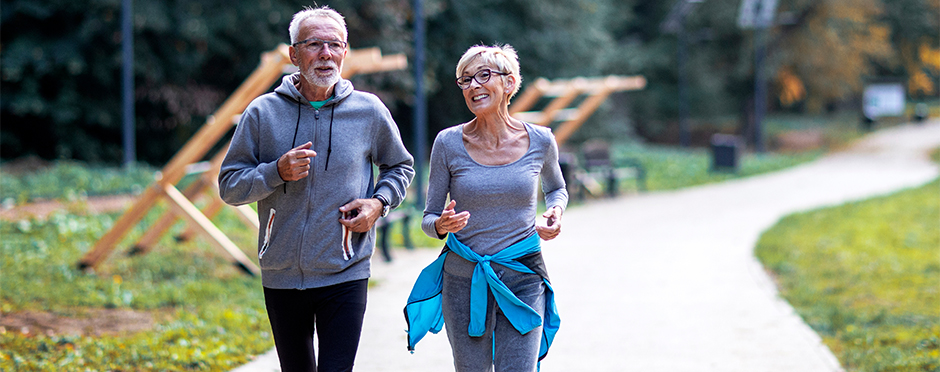
Impact Exercise for the Aging Adult
Leave a CommentMYTH: You must stop doing high impact exercise as you age and perform low impact activities instead.
FACT: We know that as we age, it is common to lose strength and power. However, that does not mean you have to avoid higher impact activities.
Many people are active when they are younger through sports, running, and other activities. As we get older, we tend to decrease high impact activities. Sometimes this is due to a previous injury, reoccurring pain, or a fear of getting hurt.
Studies have shown that we lose power at almost twice the rate we lose strength1. This equates to a decline of approximately 17% for every decade after 40 years of age. However, there are ways to counteract this and help you maintain your strength as well as other health benefits. Impact exercise is one of the ways that can help slow this decline. A 2019 study showed that older adults, in this particular study this was defined as those between the ages of 58-79, who did plyometric exercises had improved muscle strength, bone health, body composition, posture, and overall physical performance1. With all these benefits, adults should be encouraged to perform impact type exercises as they continue to age. Furthermore, no studies have reported increased injuries or other adverse effects with impact exercise1.
What is Impact Exercise and What is Power?
Impact is the force applied to the joints and the body during an activity. Impact exercise is often divided into categories of high and low impact tasks. Power is moving weight fast and performing fast movements. Power is important as we age as it can help prevent falls. If you trip, it requires a sudden loading of the muscles and a quick push back to keep you from falling over. Reaction time and motor control training is also important for an aging brain.
What Are Plyometrics?
Plyometrics are a type of exercise training that uses speed and force of different movements to build muscle power. Plyometrics are when muscles exert a maximum force in a short interval of time with a goal to increase power. Plyometrics can help with power, reaction time, and motor control.
Examples of High Impact activities:
- Running
- Jumping
- Burpees
- Box Jumps
- Jumping rope
- Plyometrics
Examples of Low Impact Activities:
- Walking
- Stepping in place
- Swimming
- Cycling
- Yoga
Examples of Plyometric Exercises:
- Agility Ladder
- Jumping Rope
- Double leg mini jumps
- Single leg mini jumps
- Broad Jumps
- Box Jumps
As with any new exercise routine, make sure to slowly progress. If you have concerns, please reach out to your doctor prior to beginning a new program. A physical therapist can also help you reach your goals for strength and power and overall health as you age. Get started by scheduling a free assessment with one of our movement experts to learn more.
*Per federal guidelines, beneficiaries of plans such as Medicare, Medicaid, Tricare, VHA and other federally funded plans are not eligible for free assessments.
The Athletico blog is an educational resource written by Athletico employees. Athletico bloggers are licensed professionals who abide by the code of ethics outlined by their respective professional associations. The content published in blog posts represents the opinion of the individual author based on their expertise and experience. The content provided in this blog is for informational purposes only, does not constitute medical advice and should not be relied on for making personal health decisions.
References:
1. Vetrovsky, T., Steffl, M., Stastny, P. et al. The Efficacy and Safety of Lower-Limb Plyometric Training in Older Adults: A Systematic Review. Sports Med 49, 113–131 (2019).
2. Franchi, M.V. et al. (2019). Bouncing back! Counteracting muscle aging with plyometric muscle loading. Frontiers in Physiology, 5, 10, 178.
